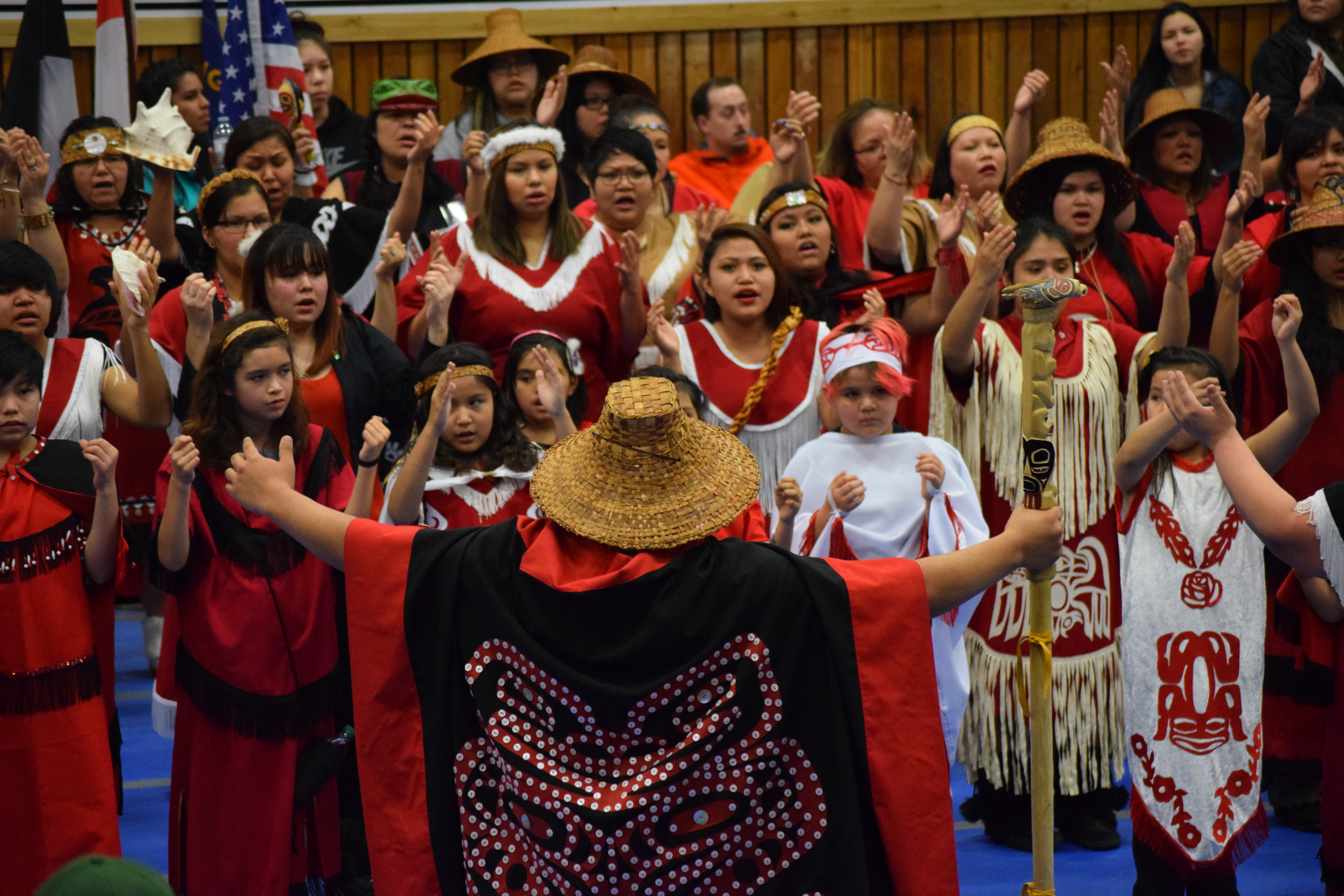Star above the bowl of the moon

Gitlaxdax singing at Hobiiyee in Gitwinksihlkw.
Rhonda Lee McIsaac —
The Nass Valley has been the home of the Nisga’a for thousands of years. After a massive volcanic eruption in the 1700’s buried the upper Nass Valley the villages and landscape were forever altered by the lava flows. The salamanders which lived in the lakes and ponds and swamps were also destroyed. Gitwinksihlkw means People of the Lizard and this name honours those who live in this area.
Gitwinksihlkw is located on the Nass River. The lava flow created a new riverbed for the Nass River which is closer to the northwest side of the valley. A canyon was created by the lava flow and became a new home for the Nisga’a people who chose to stay in Gitwinksihlkw (Canyon City) while others moved further down the Nass to Gingolx. Gitwinksihlkw remains culturally strong even through the floods, fires and outside forces.
The Creator placed the Nisga’a in this valley with helpers and gifts to show them how to live a good life. One of the many gifts was the ability to study the heavens and the people who could do this were known as the halayt.
The halayt are astronomers, prophets and weathermen, and are originally from Gitwinksihlkw. They can read when the salmon and oolichan are coming, when animals are moving and the changes in weather, when these phenomena occur. They can also tell when births and deaths occur. Counting the moons up to the Hobiyee moon has been done for thousands of years in the valley.
The winter solstice moon is called Luut’aa. Luu translates to ‘in’ and t’aa for ‘sit’ and marks the time when the sun sits in one place. This is the beginning of hobiyee moon time.
The next moon is called K’aliiyee. K’alii translates to ‘going up river’ or ‘going north’ and yee translates to ‘for a walk’; this is the time when the sun begins to walk up the river and is the moon the halayt watch for in anticipation of the Buxwlaks moon.
Buxwlaks refers to the moon time when the conifer needles are blowing around. Buxw is ‘blowing around’ and laks is ‘coniferous needles’. It is during the Buxwlaks moon that the halayt are more vigilant in their observations of the moon. They are on the lookout for the hobiyee moon. It was the quarter moon with a star above the bowl of the moon. When this happens during the Buxwlaks, the halayt shout “Hoobix Eee” to the men in the village. The greeting has been shortened to hobiyee today.
The hobiiyee moon is a time of celebration and signifies the beginning of a bountiful year of oolichans, salmon, berries and moose. Last year, the hobiiyee moon had two stars above it and it was the shortest oolichan season because the pits were filled so quickly.
Due to the Crown’s historical ban of large gatherings on reserves this practice went underground but in 1992, Sim’oogit Hymaas Chester Moore, a Raven chief, brought forward this important practice inviting neighbouring villages to join in on the celebrations.
Over years the celebrations grew and Sim’oogit Baxk’ap suggested that other villages host the celebration. With his families help, he created a moon sculpture which was passed to the next village who would host the celebration the following year. Greenville will be hosting next year.
The original celebration began in Gitwinsihlkw many, many years ago and the elders deeply acknowledge this important history in the Nisga’a valley.
[wpvideo Ivu7gQDT] [wpvideo PAQ0rJFQ]































0 Comments